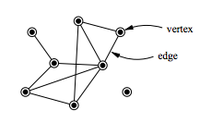
Photo from wikipedia
Scholars and journalistic accounts have devoted growing interest to the centralizing trends characterizing platforms and the “platform society.” They often oppose this model to the alleged openness, horizontality, and “equality”… Click to show full abstract
Scholars and journalistic accounts have devoted growing interest to the centralizing trends characterizing platforms and the “platform society.” They often oppose this model to the alleged openness, horizontality, and “equality” they attach to “networks.” Such depictions seem willing to give up on a thorough consideration of network structure, which appears nowadays less fundamental to reflect on the digital world (and society) than it was 25 years ago. Or even question whether the network society model, as proposed by Castells, is unsuitable for describing contemporary society. In our opinion, the dichotomy opposing the (alleged) openness and egalitarian nature of networks (and of the network society), to the current centralization trends characterizing the platform society, as well as the subsequent assumption that networks are an outdated heuristic tool, derive from a misunderstanding of networks’ structure and dynamics. Scholars have shown that the structure of most complex networks can be defined as “scale-free,” following a power-law distribution. Complex networks, indeed, show the tendency for some nodes to become more interconnected than others (thus becoming “hubs”). In this, the understanding of network structure proposed in Castells (1996), contrary to the rhetoric considering networks intrinsically as “egalitarian,” is still a conceptual and analytical tool of the utmost importance for understanding the so-called “platform society.” This paper focuses on networks, network models, and the network society, reviewing what was proposed in Castells (1996). We argue that the social and platform ecosystem we are witnessing today can be understood from the perspective of scale-free networks and is, indeed, consistent with the premises provided in 1996. When observing networks, we address both structure and agency, and both the macro (network morphology) and micro (networked individualism and sociability) levels
Journal Title: American Behavioral Scientist
Year Published: 2022
Link to full text (if available)
Share on Social Media: Sign Up to like & get
recommendations!